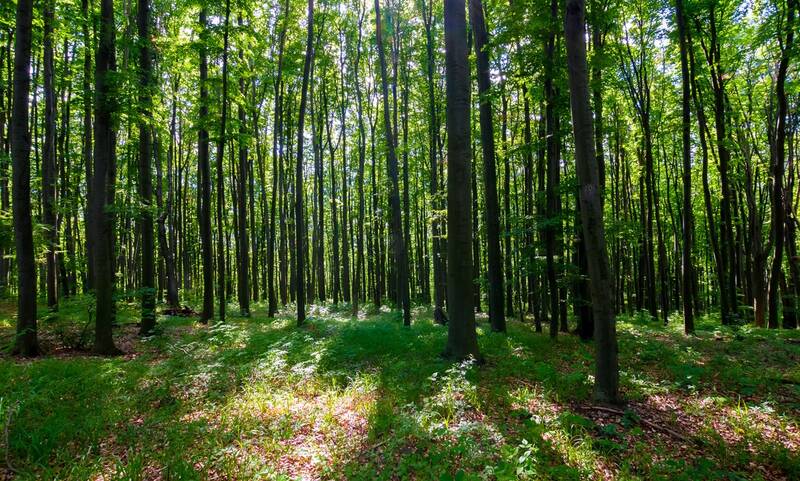Tu BiSh’vat
Tu BiSh’vat

Tu BiSh’vat is first mentioned in the Mishnah, the code of Jewish law that dates back to around 200 C.E. There, in Rosh Hashanah 1:1, the text speaks of four new years, all of which are connected to an ancient cycle of tithes. Each year, the Israelites were expected to bring one-tenth of their fruits to the Temple in Jerusalem, where they were offered to God and also helped sustain the priestly class and the poor. Since fruit from one year could not be used to tithe for another, the Rabbis had to determine when a crop year would begin and end. They chose the month of Sh’vat as the cut-off date, for this is when, in Israel, the sap begins to run and the trees start to awaken from their winter slumber, before beginning to bear fruit.
Like Hanukkah, Tu BiSh’vat is a post-biblical festival, instituted by the Rabbis. However, the holiday has biblical roots. The tithing system upon which it is based dates back to the Torah and its deep concern with trees, harvests, and the natural world, all of which are at the heart of Tu BiSh’vat. Beginning with the Tree of Knowledge of Good and Evil in the Garden of Eden all the way through to Deuteronomy’s injunction against destroying fruit trees in times of war, our biblical text is replete with trees, both literal and metaphorical. Indeed, the Torah itself often is referred to as an eitz chayim (tree of life), based on a passage in the Book of Proverbs.
Although the celebration of Tu BiSh’vat has a long and varied history, the theme most commonly ascribed to the holiday today is the environment. It is considered a festival of nature, full of wonder, joy, and thankfulness for God’s creation in anticipation of the renewal of the natural world. During this festival, Jews recall the sacred obligation to care for God’s world, and the responsibility to share the fruits of God’s earth with all.
Tu BiSh’vat falls at the beginning of spring in Israel, when the winter rains subside and the pink and white blossoms of the almond trees begin to bud. It is for this reason that almonds and other fruits and nuts native to the Land of Israel — barley, dates, figs, grapes, pomegranates, olives, and wheat — are commonly eaten during the Tu BiSh’vat seder.
In modern times, Tu BiSh’vat was nourished by the rise of the Zionist movement in the late 19th and early 20th centuries, which re-emphasized the Jewish people’s connections to the land and the natural world. It was the Zionist pioneers who — with strong financial support from Jews throughout the world who donated trees to mark smichot (special occasions) — re-forested the land of Israel, largely under the auspices of the Jewish National Fund (Keren Kayemet l’Yisrael). As a result of this emphasis on tree planting — on Tu BiSh’vat and all year long — Israel stands as the only country in the world with an almost constant net growth of trees.
Customs and Rituals
In Israel, another new year will soon be celebrated. Tu BiSh’vat, the ‘New Year of the Trees,’ is observed on the fifteenth day of the Hebrew month of Sh’vat.
Tu BiSh’vat is not mentioned in the Torah. According to scholars, the holiday was originally an agricultural festival, corresponding to the beginning of spring in Israel. As in the case with many Jewish observances, a critical historical event served as a catalyst. After the destruction of the Second Temple in 70 C.E. and the exile that followed, many Jews felt a need to bind themselves symbolically to their former homeland. Tu BiSh’vat served in part to fill that spiritual need. As it was no longer possible to bring tithes to the Temple, Jews used this time each year to eat a variety of fruits and nuts that could be obtained from Palestine. The practice, a sort of physical association with the land, continued for many centuries.
The sixteenth and seventeenth century kabbalists (mystics) of Palestine elaborated on the exilic customs, creating a ritual for Tu BiSh’vat somewhat similar to the Passover seder. On Erev Tu BiSh’vat, they would gather in their homes for a fifteen-course meal, each course being one of the foods associated with the land. Between courses, they would read from an anthology called P’ri Eitz Hadar (Citrus Fruit), a compilation of passages on trees drawn from the Bible, the Talmud, and the mystical Zohar.
Today in modern Israel, Tu BiSh’vat has become a national holiday, a tree planting festival for both Israelis and Jews throughout the world. Much of the credit for the great joy and spirit of the holiday is a direct result of the important work of the Jewish National Fund.*
Tu BiSh’vat may be observed in a variety of ways.
Tu BiSh’vat seders are not just for mystics! Host a seder and celebrate the many wonderful fruits and nuts of Israel. Many recipes include these foods. Entree to Judaism for Families: Jewish Cooking and Kitchen Conversations with Children by Tina Wasserman includes many recipes for families to enjoy cooking together.
While the food is cooking, keep busy by making a Tu BiSh’vat Handprint Tree or one of these other fun family activities.
Fri, November 21 2025
1 Kislev 5786
Today's Calendar
| Rosh Chodesh Kislev |
: 7:00pm |
Upcoming Programs & Events
Nov 21 |
Nov 22 |
Nov 23 |
Nov 24 |
Nov 24 |
View Calendar
Join Our Mailing List
HOME | DONATE/PAY | SHOPRAISE | FACEBOOK | INSTAGRAM

Privacy Settings | Privacy Policy | Member Terms
©2025 All rights reserved. Find out more about ShulCloud
